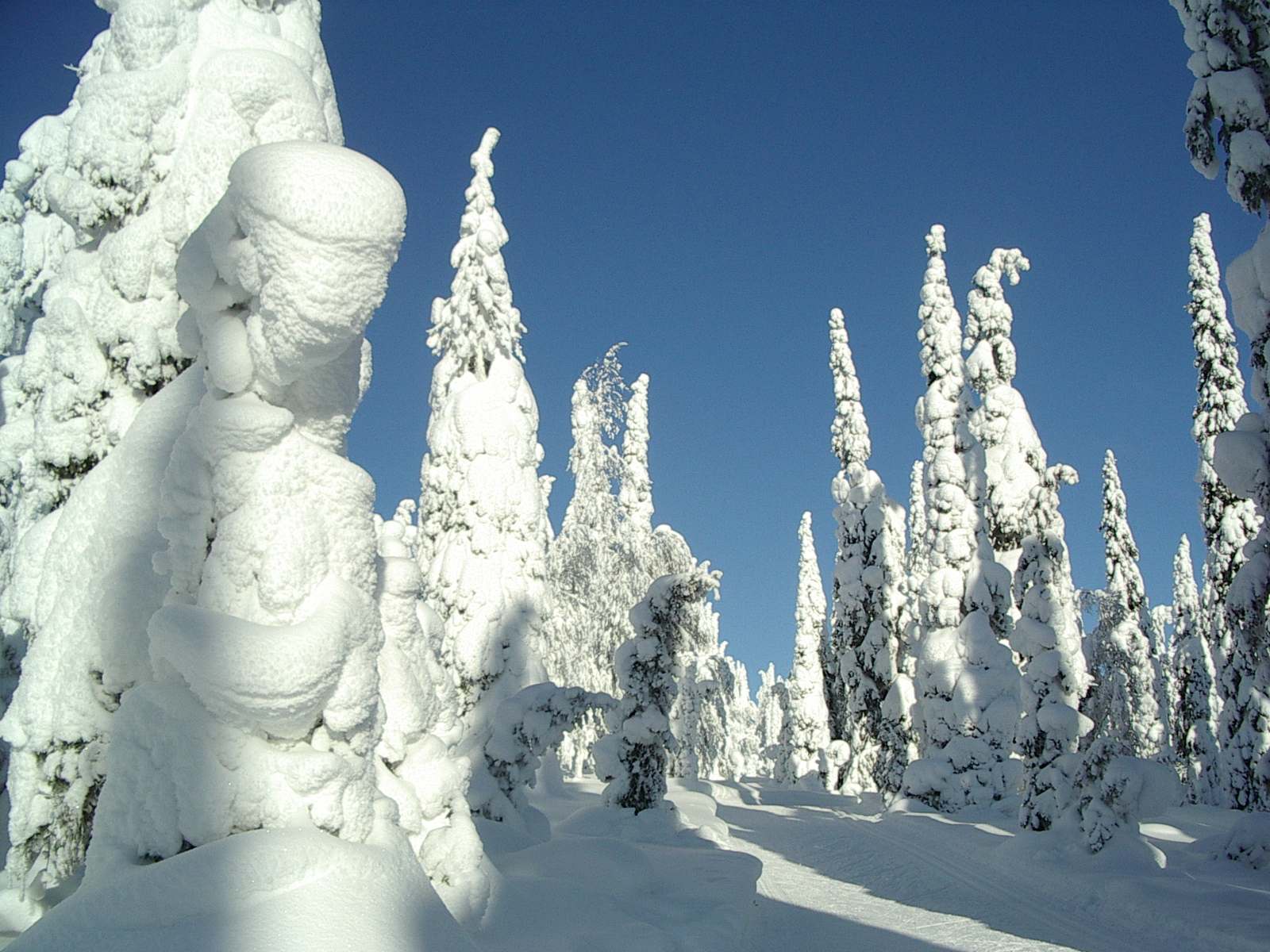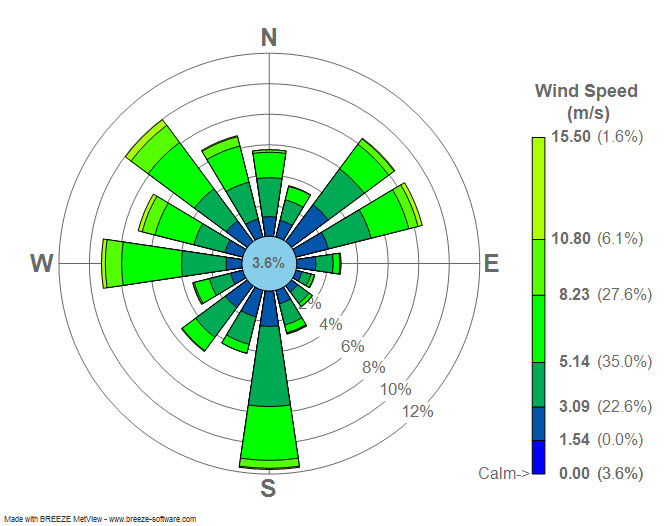|
Ice Pruning
Ice pruning is the natural process of selective vegetative pruning on the windward side of a plant, executed by the impact of ice and snow particles driven by wind.William M. Marsh (1978) ''Environmental Analysis: For Land Use and Site Planning'', McGraw-Hill, 292 pages The process is sometimes termed snow pruning. The time scale required for this phenomenon is typically over several growing seasons. The characteristic asymmetry of an ice-pruned plant is achieved only if the prevailing winds during the snow season have a definite directional bias, as shown on a wind rose. Ice pruning is seen in high latitudes and altitudes, such as high mountain slopes and locations more than 50 degrees of latitude from the equator. In parts of northern Canada, forests dominated by Black Spruce have been noted for containing individual trees that are distinctively ice-pruned.C. Michael Hogan''Black Spruce: Picea mariana'', GlobalTwitcher.com, ed. Nicklas Stromberg, November, 2008 See also * Salt ... [...More Info...] [...Related Items...] OR: [Wikipedia] [Google] [Baidu] |
Pruning
Pruning is a horticultural, arboricultural, and silvicultural practice involving the selective removal of certain parts of a plant, such as branches, buds, or roots. The practice entails the ''targeted'' removal of diseased, damaged, dead, non-productive, structurally unsound, or otherwise unwanted plant material from crop and landscape plants. Some try to remember the categories as "the 4 D's": the last general category being "deranged". In general, the smaller the branch that is cut, the easier it is for a woody plant to compartmentalize the wound and thus limit the potential for pathogen intrusion and decay. It is therefore preferable to make any necessary formative structural pruning cuts to young plants, rather than removing large, poorly placed branches from mature plants. In nature, meteorological conditions such as wind, ice and snow, and salinity can cause plants to self-prune. This natural shedding is called abscission. Specialized pruning practices may be ap ... [...More Info...] [...Related Items...] OR: [Wikipedia] [Google] [Baidu] |
Crown Snow-load
Crown snow-load is snow and hard rime that accumulates on tree crowns in a cold climate. There are two main climatic conditions in which this phenomenon chiefly takes place. Hard rime is formed when subcooled droplets of fog or low-level stratus cloud freeze on the windward (wind-facing) side of tree branches, buildings, or any other solid objects. This takes place usually with moderate wind speeds from and air temperatures between . Snow may accumulate directly on the trees when a warm front brings wet snow, the air temperature is slightly above the freezing point and the surface of the tree is colder due to a preceding cold spell. In Scandinavia, largest snow-loads accumulate to the trees on top of medium-sized fell A fell (from Old Norse ''fell'', ''fjall'', "mountain"Falk and Torp (2006:161).) is a high and barren landscape feature, such as a mountain or Moorland, moor-covered hill. The term is most often employed in Fennoscandia, Iceland, the Isle o ...s. The large ... [...More Info...] [...Related Items...] OR: [Wikipedia] [Google] [Baidu] |
Wind Rose
A wind rose is a graphic tool used by meteorologists to give a succinct view of how wind speed and direction are typically distributed at a particular location. Historically, wind roses were predecessors of the compass rose (found on charts), as there was no differentiation between a cardinal direction and the wind which blew from such a direction. Using a polar coordinate system of gridding, the frequency of winds over a time period is plotted by wind direction, with colour bands showing wind speed ranges. The direction of the longest spoke shows the wind direction with the greatest frequency. History Before the development of the compass rose, a wind rose was included on maps in order to let the reader know which directions the 8 major winds (and sometimes 8 half-winds and 16 quarter-winds) blew within the plan view. No differentiation was made between cardinal directions and the winds which blew from those directions. North was depicted with a fleur de lis, while east w ... [...More Info...] [...Related Items...] OR: [Wikipedia] [Google] [Baidu] |
Equator
The equator is a circle of latitude, about in circumference, that divides Earth into the Northern and Southern hemispheres. It is an imaginary line located at 0 degrees latitude, halfway between the North and South poles. The term can also be used for any other celestial body that is roughly spherical. In spatial (3D) geometry, as applied in astronomy, the equator of a rotating spheroid (such as a planet) is the parallel (circle of latitude) at which latitude is defined to be 0°. It is an imaginary line on the spheroid, equidistant from its poles, dividing it into northern and southern hemispheres. In other words, it is the intersection of the spheroid with the plane perpendicular to its axis of rotation and midway between its geographical poles. On and near the equator (on Earth), noontime sunlight appears almost directly overhead (no more than about 23° from the zenith) every day, year-round. Consequently, the equator has a rather stable daytime temperature throug ... [...More Info...] [...Related Items...] OR: [Wikipedia] [Google] [Baidu] |
Black Spruce
''Picea mariana'', the black spruce, is a North American species of spruce tree in the pine family. It is widespread across Canada, found in all 10 provinces and all 3 territories. It is the official tree of the province of Newfoundland and Labrador and is that province's most numerous tree. The range of the black spruce extends into northern parts of the United States: in Alaska, the Great Lakes region, and the upper Northeast. It is a frequent part of the biome known as taiga or boreal forest.. The Latin specific epithet ''mariana'' means “of the Virgin Mary”. Description ''P. mariana'' is a slow-growing, small upright evergreen coniferous tree (rarely a shrub), having a straight trunk with little taper, a scruffy habit, and a narrow, pointed crown of short, compact, drooping branches with upturned tips. Through much of its range it averages tall with a trunk diameter at maturity, though occasional specimens can reach tall and diameter. The bark is thin, scaly, and ... [...More Info...] [...Related Items...] OR: [Wikipedia] [Google] [Baidu] |
Salt Pruning
Salt pruning is the process by which saline mists generated by seawater are driven ashore by winds and thus over time alter the shape of trees or shrubs. The process degrades foliage and branches on the windward side of the plant that faces the body of saline water, more than it does the foliage on the landward side. The resultant growth form is asymmetrical, appearing "swept back" away from the ocean. Examples There are numerous examples worldwide of this phenomenon. In the eastern United States on Long Island occurrences of salt-pruned ''Quercus stellata'' are observable in Flax Marsh. In San Diego County, California, a colony of ''Pinus torreyana'' has been salt-pruned by spray from the Pacific Ocean.C. Michael Hogan (2008"Torrey Pine: ''Pinus torreyana.''" Globaltwitcher, ed. Nicklas Stromberg The logo of the Torrey Pines Golf Course in La Jolla, California, features a salt-pruned Torrey pine. See also * Ice pruning * Lone Cypress The Lone Cypress is a Monterey cypress tree ... [...More Info...] [...Related Items...] OR: [Wikipedia] [Google] [Baidu] |




